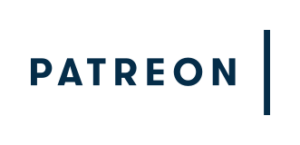I gazed at the full moon,
hanging low and bright oe’r the trees last night,
warm and inviting on that September night.
Previously, we featured a story discussing this month’s full moon. In that article, we noted that the full moon closest to the Autumnal Equinox is known as the Harvest Moon. It should be pointed out that this year’s Harvest Moon is also a Super Moon.
The Harvest Moon
The full moon nearest to the Autumnal Equinox is known as the “Harvest Moon”. This year, that will occur Friday, September 29 at 9:59 AM (UTC), 5:59 AM (EDT).
Before the invention of the electric light, the light of the full moon gave aid to the farmers of old, extending the time during which they could harvest their crops. Rarely, the Harvest Moon occurs during October but when it does, the September full Moon is also known as the Full Corn Moon as it corresponds with the corn harvest. This moon is also known as the Barley Moon, corresponding to the barley harvest.
For moon fans, the month begins and ends with a New Moon. The Full Moon occurs precisely between each new moon on the 16th day of the lunar cycle. For additional details, a full lunar calendar and the lore behind each month’s Full Moon, please visit The Full Moon Page at Time and Date.
Why is this month’s full moon also referred to as a Supermoon, and what is a Supermoon?
Kepler’s First Law of Orbital Motion teaches us that all orbits are elliptical, some orbits more elliptical than others. This property of an ellipse, known as the eccentricity, depends, among other things, on the magnitude of the respective masses.
All elliptical orbits necessarily have an apogee, the most distant point in the orbit and a perigee, the closest point in the orbit to the other orbiting body. In the case of our moon, a supermoon occurs when the moon is at its perigee point during the full-moon phase. The moon will appear ever so slightly larger simply because it’s closer. There are 4 supermoons in 2023, July’s Full Buck Moon, August’s Sturgeon Moon on August 1st and the Blue Moon of August 30-31 and the fourth and final one occurs this Friday, September 29th at 9:59 AM (UTC), 5:59 AM (EDT).
A quick, interactive web-based version of Stellarium is available here Tonight's Sky. When you launch the application, it defaults to north-facing and your location (on mobile and desktop).
Astronomy For Change: https://astronomyforchange.org
Did you enjoy this article or like what we do? Why not leave a tip or buy us a Coffee?
Follow Us On Twitter: https://twitter.com/astronomychange
Why not support us on Patreon: https://www.patreon.com/astronomyforchange
Imagination is more important than knowledge
![]()
An index of all articles can be found here.
If you enjoyed this article, please consider supporting us with a modest donation
or through a subscription on our Patreon Page
Membership at Astronomy for Change is Free!




